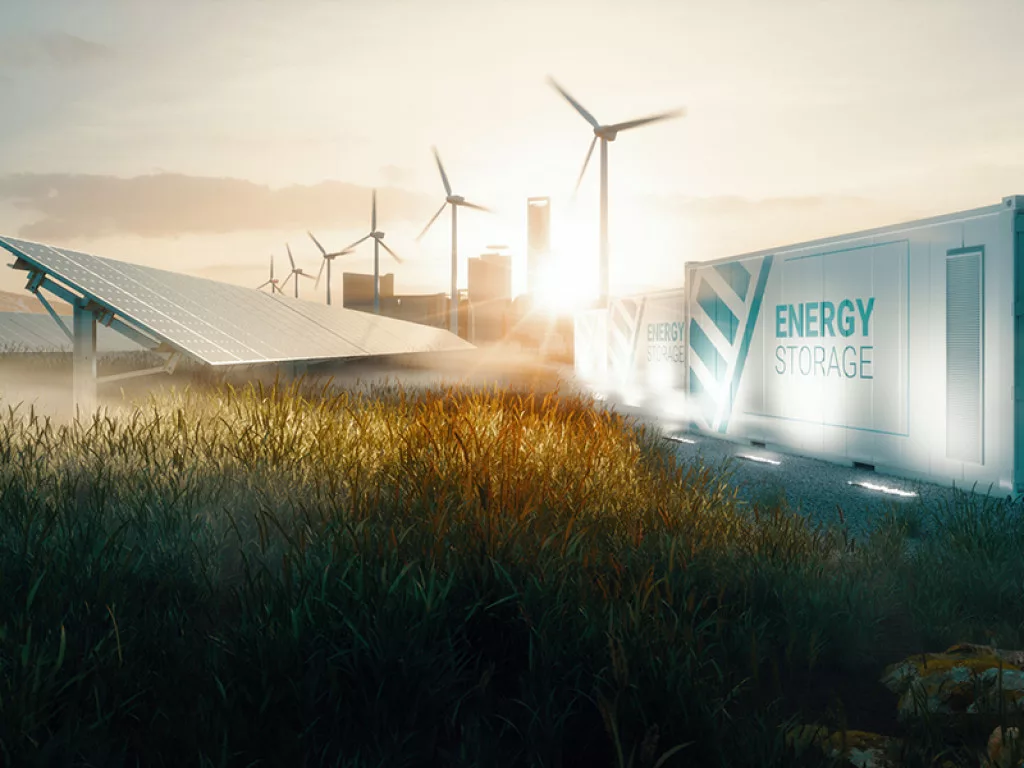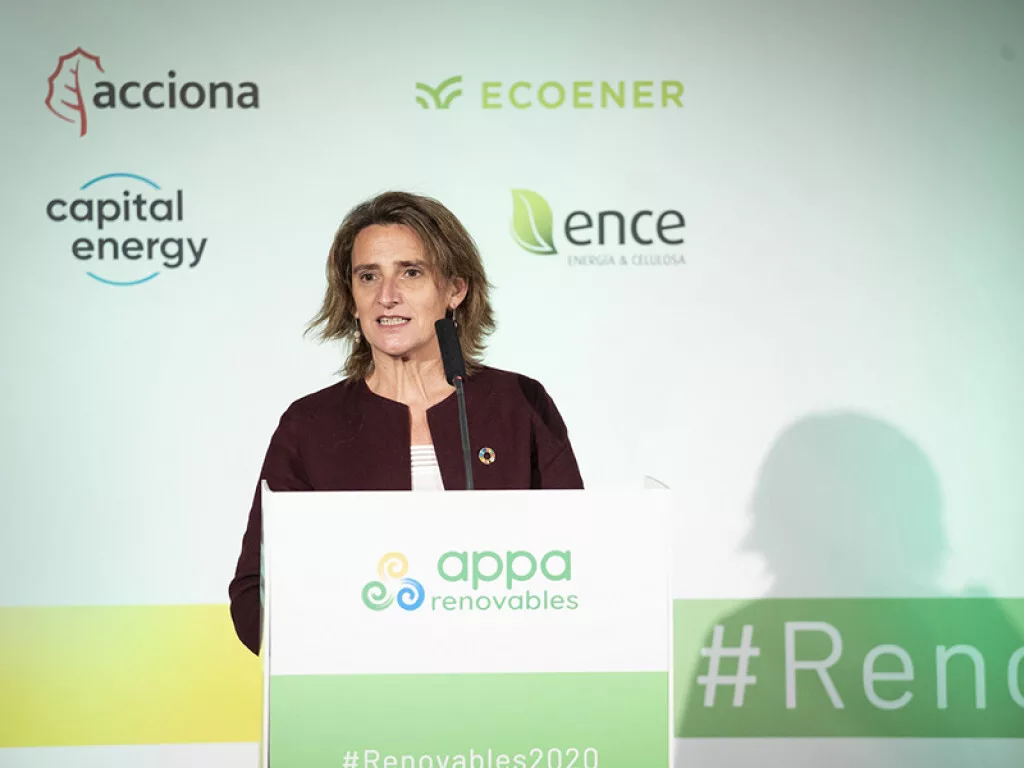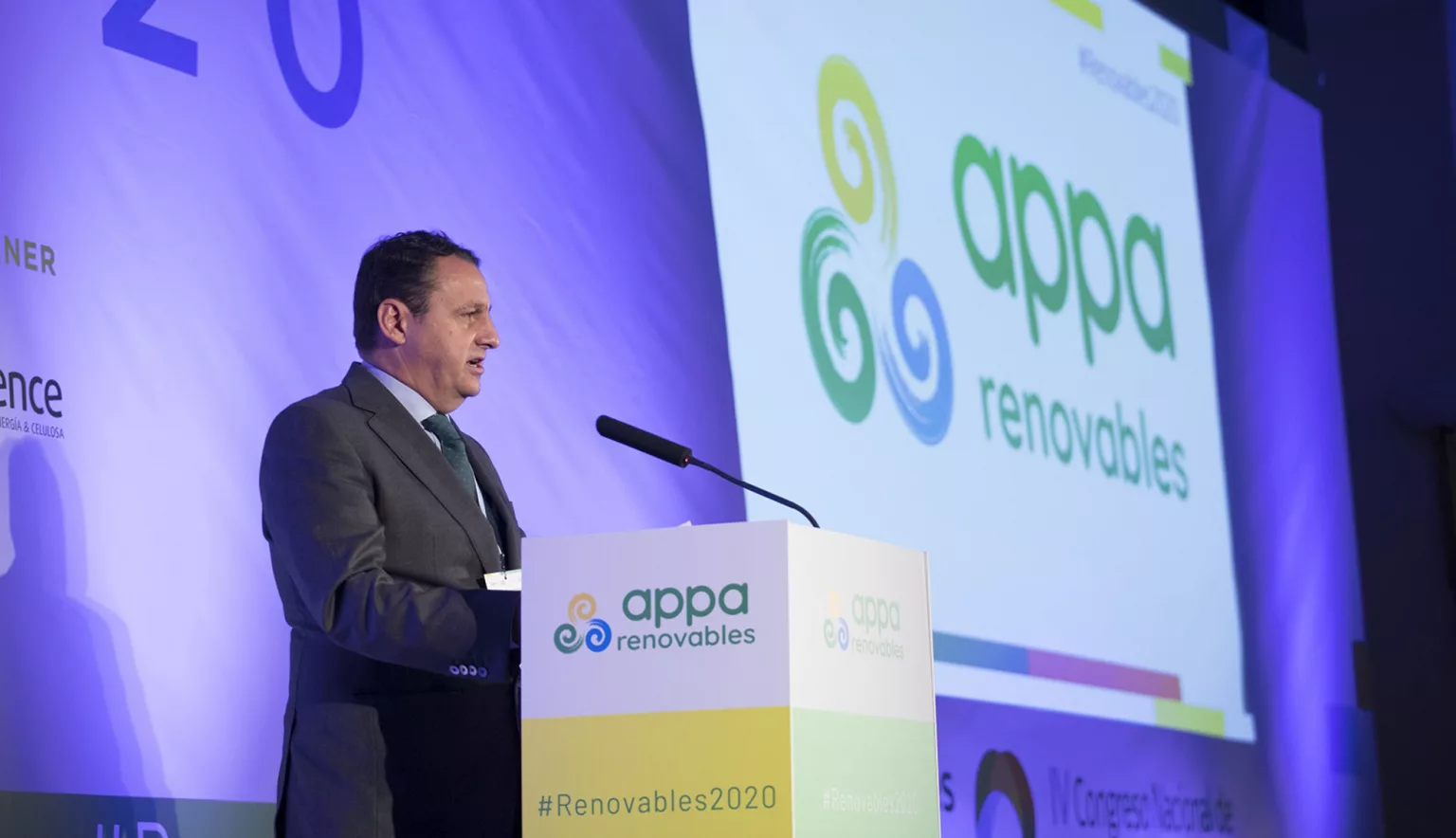We speak to APPA Renovables and examine the development of renewable energies on Spain’s journey towards decarbonisation, as the country endeavours to reduce imports and diversify the energy mix.
SPAIN’S RENEWABLE ENERGY SECTOR
Spain is a country in transition.
In line with the EU’s 2030 Climate Target Plan – which aims to cut 55 percent of greenhouse gas emissions by 2030 – Spain’s energy sector is undergoing a seismic shift away from fossil fuel dependency.
Covering five-sixths of the Iberian Peninsula and as the third most heavily forested country in Europe, Spain is blessed with a wealth of indigenous resources which translates to one of the most significant potentials for agricultural biomass on the continent. Meanwhile, the rivers to the north of the country, the mighty Ebro and the Aragon, are the crucial arteries to feed hydroelectric power generation which presently accounts for one-sixth of Spain’s electricity. In 2019, Spain installed the most on shore wind turbines of all countries in the EU, whilst thermoelectric power plants have been in operation to the south nearby Sevilla since 2007. By leveraging these natural resources with an advanced technological infrastructure, the potential for Spain is enormous.
The prominence of the country’s mining industry has depleted Spain’s abundant coal reserves, which are no longer able to fulfil energy demands. Consequently, Spain has converted from a mineral exporter to a major importer of both coal and petroleum, which suggests the untold economic benefits that renewable power generation could bring. Now, Spain’s coal mines, dotted throughout the mountain valleys of the Cantabrian Mountains, the Iberian Cordillera and the Sierra Morena, have effectively ceased operation – all bar one.
The Spanish Government were first alerted to the country’s pressing energy shortages in the 1960s, which prompted the launch of a nuclear energy programme and the construction of several nuclear power plants through to the 1980s. The departure towards renewable energy sources was initiated in 2006, when the country’s original 1968 power plant halted generation. As Spain gradually phases out of both coal and nuclear power, coal-fired plants have reduced production by 60 percent compared with 2019 records, and now only represent two percent of the total generation.
The country faces a long and complicated process, to achieve decarbonisation and greater renewables penetration, without compromising or disenfranchising those communities present in traditional energy sectors, most notably coal mining. Yet promising strides have already been made.
According to a report published by Spanish grid operator Red Electrica de Espana (REE), in 2020 the country produced 43.6 percent of its annual electricity from renewable sources – this marks the highest percentage of renewables in Spain’s power mix since diversification first began in the early 2000s.
This dynamic shift has been a major boost for the country, leading to Spain becoming one of the EU’s major exponents of renewable energy particularly through solar and wind power. Now, the country’s goals are aligned with the EU and European Green Deal objective of national climate-neutrality by 2050. Specifically, this entails 100 percent renewable energy within electricity, and 97 percent renewable energy in the total energy mix. This will necessitate the concerted development of solar and wind power, energy efficiency, electrification and renewable hydrogen.
Q&A WITH APPA RENOVABLES: SPANISH RENEWABLE ENERGY ASSOCIATION
As the sole representative organisation for Spain’s renewable energy sector, APPA Renovables have been lobbying for the development and diversification of the country’s energy mix since 1987. General Director, José María González Moya, discusses overcoming economic hurdles, strides in solar power, and the long journey ahead
The Spanish Renewable Energy Association, commonly known as APPA Renovables, was founded in 1987, during the nascent days of renewable energies. Formed by a congregation of small-scale hydropower producers, APPA Renovables continue to champion the development and promotion of all renewable energies across Spain, as the country embarks on Europe’s ambitious energy transition. Now, the organisation represents over 500 companies as the sole association to lobby on behalf of renewable energies at state level. Comprised of companies spanning the various renewable sectors, including biofuels, biomass, and high and low enthalpy geothermal amongst others, APPA Renovables endeavours to deliver the country’s clean energy future whilst safeguarding industry interests.
Can you talk us through the origins of APPA Renovables; how it came about, and its initial vision?
Mr. José María González Moya (JGM): Back in the 80s, modern renewables were more of a romantic idea than a reality. Spain, along with the rest of the world, suffered the oil crisis in the seventies at a time when wind power or solar photovoltaic (PV) were years from becoming competitive. Nevertheless, there were some renewable technologies that were playing an important role in our power system: hydro technologies. While large-scale hydro was in the hands of big companies and didn’t need protection, the smaller hydro, the origin of all the renewable generation technologies, demanded special attention. Some small hydro producers gathered and created APPA Renovables, an association to defend the renewable companies’ interests. Since then, our association has grown and continually fought for all forms of renewables: wind power, biomass, geothermal, PV, all of which play a key role in the development of renewables in Spain.

“As a society, energy transition and digital transformation are the main challenges of our era, because they will bring social justice”
José María González Moya, General Director, Spanish Renewable Energy Association
Since inception, how has APPA Renovables developed and progressed in terms of its key objectives and the messages it tries to get across?
JGM: There have been important changes both in the social perception of and the political approach to renewables. In the 80s and 90s, renewables were a small player in comparison with fossil fuels and nuclear. During those decades, we lived in relative calm and didn’t experiment with greater development other than the first wind power projects. Everything changed in the 2000s were financial schemes entered in the equation, with feed-in-tariff programmes. This bought many different developments depending on the technology. While wind power had an organic development, the PV sector and, later, CSP, had an explosion of projects that finally traduced in more capacity than was planned. After that, there was an important movement for different players to stop renewable development, trying to link the feed-in-tariffs retribution to the systemic problem of tariff deficit. As the message echoed through political spheres, we suffered stop-and-go policies that hampered our development for five years.
Fortunately, the work developed by APPA Renovables and all the companies of the sector, both at an institutional and political level, was fruitful. All this work, and the competitiveness achieved by these technologies, has returned renewable energies to the leading place that they should have always occupied.
What do you find most exciting about working within Spain’s renewable energy sector?
JGM: It is a very exciting feeling when you play a part in the energy transition. As a society, energy transition and digital transformation are the main challenges of our era, because they will bring social justice. When PV was one of the most expensive technologies, it was the solution chosen to bring electricity to the isolated population. If you wanted to bring electricity to a town that was not connected to the power grid, you chose PV. Now, PV is one of the cheapest options, and that’s a big success. We have pushed the market, and it has achieved an unprecedented cost reduction: a 90 percent cost reduction in ten years. Being a part of that revolution is fulfilling.
On the flip side, what are its biggest challenges?
JGM: We have conquered the economic debate but there are important technical challenges ahead. Storage, mobility, thermic uses… We cannot just rely on the electricity advances because electricity is a very small part of the overall landscape. In Spain, a country clearly located among the developed countries, electricity is less than the 25 percent of the energy consumption. In developing countries, it is even less than that figure. So, if we really want to boost renewable energies, we have to answer those challenges: how are we going to store the electricity generated, how are we going to manage an electric system based on 70 percent or more renewables, how are we going to make our vehicles greener, etc. There is a lot of work yet to be done.

What trends are currently transforming the renewable energy industry, particularly within Europe? How are you responding to them?
JGM: In Europe, we have a serious problem with energy dependence. More than the 50 percent of the energy has to be imported from abroad. And the problem is even bigger in Spain, with that figure surpassing 70 percent. We don’t have oil, we don’t have gas, so we have to pay – a lot – for them. That’s macroeconomics and maybe the industry don’t suffer this, but in a different level it’s the same problem. Self-consumption through PV is bringing competitiveness to our industries. Last year, more than 620 megawatts of self-consumption systems were implemented both at an industrial and a residential level. We work with the national and the regional Governments to simplify and accelerate the procedures.
Have you got any projects in the pipeline that you wish to highlight?
JGM: As the main renewable association in Spain, and the only one to defend all the green energy technologies, we have always been committed with Europe. We lead different European projects as iDistributedPV or DRES2Market. These projects are the state of the art in the renewable integration of the power grid, enabling us to get ahead of the challenges that we will be facing in five to 10 years.
How do you see the renewable energy industry in Spain developing over the next five years?
JGM: 2019 was a record year in capacity installation, with more than seven gigawatts of renewable new power. 2020, amidst COVID-19, was a record gear in generation, with more than 44 percent of the electricity coming from sustainable (renewable) energies. Next decade we will have a strong installation path and we will be facing the first challenges in our power grid as the percentage of renewables rises: curtailments, electric pool disequilibrium, etc. We have very exciting technical challenges ahead and I am sure that we will solve them successfully.
Are you optimistic about the future of renewable energies in Europe?
JGM: More than optimistic. In APPA Renovables, we have been working on the development of renewables for the past thirty years. Back then, we were convinced that renewables were our future, and now we see that dream fulfilled. Benefits that were obvious for us are now shared by companies, society and the government, with everyone aligned in a mutual goal. When you believe in the work you are doing, the biggest challenges are only temporary delays in the achievement of your final goal.



































